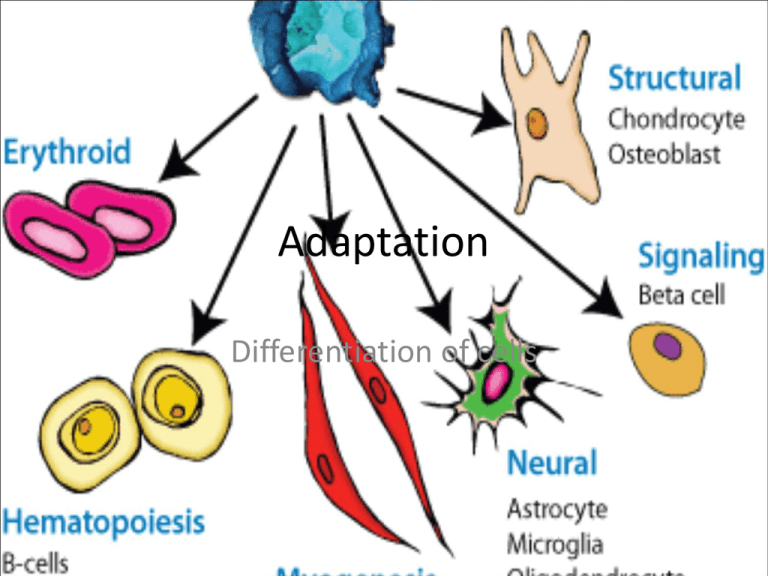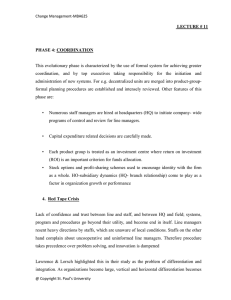Adaptation
advertisement

Adaptation Differentiation of cells Differentiation • Definition – give a dictionary definition of the word above. • Give examples of differentiated cells • Cellular differentiation is the process by which a less specialised cell becomes a more specialised cell type • Examples you need to be aware of are: • erythrocytes (red blood cells) and neutrophils derived from stem cells in bone marrow, • xylem vessels and phloem sieve tubes from cambium; Lesson 7 - Differentiation Learning Objectives • define the term differentiation, with reference to erythrocytes, neutrophils • describe and explain, how cells of multicellular organisms are specialised for particular functions • explain the meaning of the terms tissue, organ and organ system Success Criteria • Produce a resource to show how each of the cell types is differentiated • Describe how the cell’s differentiation allows it to fulfill its role • Produce a flow diagram to show how blood cells differentiate Spec. Check • describe and explain, with the aid of diagrams and photographs, how cells of multicellular organisms are specialised for particular functions, • with reference to erythrocytes, neutrophils, epithelial cells, sperm cells, palisade cells, root hair cells and guard cells; • explain, with the aid of diagrams and photographs, how cells are organised into tissues, using squamous and ciliated epithelia, xylem and phloem as examples; How can cells be adapted? • The amount of a certain organelle • The shape of the cell • The contents of the cell Erythrocyte Adaptations Organelles • No nucleus, mitochondria, Golgi apparatus, rough endoplasmic reticulum Shape • Biconcave discs Contents • Contain lots of the protein haemoglobin Neutrophil Adaptations Organelles • Many lymphocytes Sperm Cells Adaptations Organelles • Many mitochondria • Acrosome (lysosome) Shape • Streamlined • Undulipodium Content • Half the number of chromosomes Epithelial Cell Squamous Epithelial Cell • Flattened • Smooth • Secrete collagen and glycoproteins Ciliated Epithelial Cell • Covered in cilia • Some release mucus Palisade Cells Adaptation • Lots of chloroplasts for photosynthesis • Laid end on • Placed at top of leaf Guard Cell Adaptations • Thick cell walls so inner cell wall does not stretch • Contain chloroplasts to undergo photosynthesis Root Hair Cell Adaptations • Large surface area




